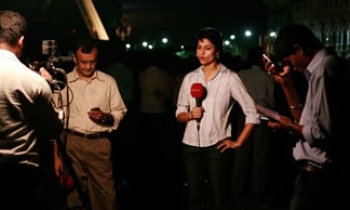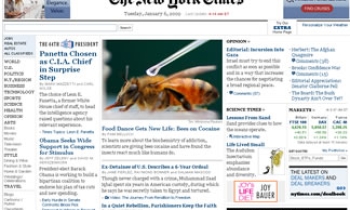Advertisers pay to reach the readers and that’s how newspapers by acting as a bridge between the two make their moolah. But what about their online editions? After all, no newspaper worth its masthead is without an online sibling.
That online editions have not been deluged with ads so far has to do with several reasons, but the silver lining is that things are looking brighter with media planners and advertisers waking up to the reach of Internet in India and its immediate connect with the target audience. The question is how much economic sense does it make to publish an online edition of a newspaper?
Mahendra Swarup, CEO, Times Internet, speaking about the online edition of The Times of India, said, "If we look at the statistics, our page views are growing by 30 to 40 per cent quarter on quarter. Our news site gets 2.5 lakh new and unique visitors every month. The revenues are also growing manifold as ad spend is gradually shifting to the Net."
Despite the growth in page view numbers, this medium requires far greater penetration levels to become an attractive destination for advertisers. Said Swarup, "It is not about profitability right now, but about being available on the Net and having an online strategy so that we do not lose out on the unique visitors. We have found that the overlap of an offline reader going to the Net is only about 20 per cent, but we don’t want to miss out on the other 80 per cent."
Swarup also pointed out that a couple of years back, the major chunk of page views came from the NRI community, but that trend was changing "as we attract a lot more local readers today."
S N Bhaduri, VP-e-business, HT Media Ltd, is of the opinion that marketers are not taking the Internet seriously. "Despite the growth in online advertising, there is still a perception amongst marketers that the online medium is more of a direct marketing tool or a cost per acquisition and lead generation vehicle, and less of a brand building medium," he remarked.
Bhaduri wants marketers to realise that the Internet, if made a part of the media mix, can add to brand awareness and recall. As for the online edition of HT, Hindustantimes.com, Bhaduri claimed that it was a profitable venture, but refused to divulge any further details.
Not to be ignored are the online editions of Hindi newspapers, which are gaining popularity among people in smaller cities. The number of Internet users in rural India is pegged at 2,760,000 in comparison to 8,061,000 urban users (Source: NRS 2005).
Talking about the hindrances faced by online editions of Hindi newspapers, Sanjay Gupta, CEO and Editor, Jagran Group, said, "Unlike online English newspapers, the Hindi portals sometimes face problems when the font type is not supported by the operating system and browser." Dainik Jagran claims its online edition, jagran.com, is the No 1 Hindi news portal.
Currently, the major advertisers in online newspaper editions and on the Net in general are from the services and financial sectors, and matrimonial and job sites. Other big emerging advertisers are the automobile, travel and entertainment sectors.
In all this talk about the financial viability of online editions of newspapers, the role of media planners is crucial as they are the ones who help publishers make their moolah. So, what do media planners feel about online editions?
Shashi Sinha, Executive Director, Lodestar, feels that although the Internet medium is presently small, it has terrific potential. "Since the incremental cost is not much, newspapers go in for online editions. Cross-selling happens as online is a small medium right now, but it is definitely waiting to explode. All it needs is more focus from both publishers and media planners in order to make this medium more financially viable."
Anita Nayyar, Managing Director, Starcom-North India and Pakistan, also felt that only a small chunk of advertising spends went into the online medium compared to other mass mediums.
She said, "Even now, the reach of this medium is not high when compared to other mass media vehicles like television and print. Therefore, the ad spend is also less, which results in lesser revenue being generated."
Nayyar would like publishers to be a bit more aggressive in marketing their online editions to make them more viable.
The fact remains that today most Internet users log on to sites like Indiatimes, Rediff, MSN and Yahoo! for news and information. That net editions of newspapers need to create their own identity in the online space so that they get more traffic and in turn receive more advertising is a fact that is not lost on publishers and advertisers.
Swarup had the last word when he said, "The online edition will always be complementary to what happens offline. But it is important for both the mediums to learn to survive together so that print meets the Net and vice-versa, and become far more complementary than what they are today."







